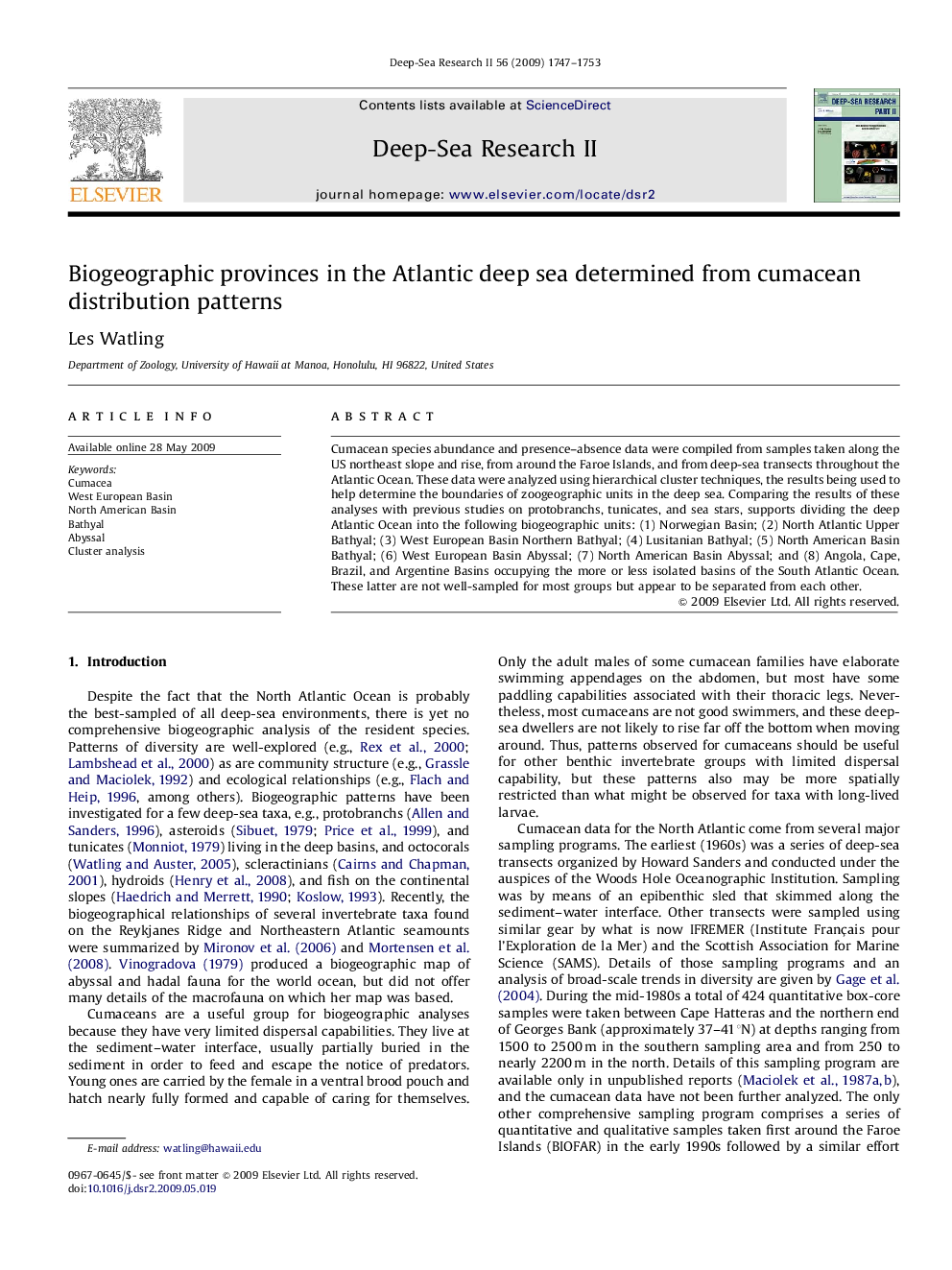| Article ID | Journal | Published Year | Pages | File Type |
|---|---|---|---|---|
| 4537298 | Deep Sea Research Part II: Topical Studies in Oceanography | 2009 | 7 Pages |
Abstract
Cumacean species abundance and presence-absence data were compiled from samples taken along the US northeast slope and rise, from around the Faroe Islands, and from deep-sea transects throughout the Atlantic Ocean. These data were analyzed using hierarchical cluster techniques, the results being used to help determine the boundaries of zoogeographic units in the deep sea. Comparing the results of these analyses with previous studies on protobranchs, tunicates, and sea stars, supports dividing the deep Atlantic Ocean into the following biogeographic units: (1) Norwegian Basin; (2) North Atlantic Upper Bathyal; (3) West European Basin Northern Bathyal; (4) Lusitanian Bathyal; (5) North American Basin Bathyal; (6) West European Basin Abyssal; (7) North American Basin Abyssal; and (8) Angola, Cape, Brazil, and Argentine Basins occupying the more or less isolated basins of the South Atlantic Ocean. These latter are not well-sampled for most groups but appear to be separated from each other.
Related Topics
Physical Sciences and Engineering
Earth and Planetary Sciences
Geology
Authors
Les Watling,
